- Home
- Deborah Harkness
The World of All Souls Page 36
The World of All Souls Read online
Page 36
Matthew, a veteran of battlefields and hospitals, had suspected for some time that Galen’s anatomy was not quite right. But it took Vesalius’s dissections, and the publication and discussion of his findings, to get Matthew to begin to move away from the Galenic texts that had informed his first thousand years. Matthew was one of the many spectators who attended Vesalius’s dissections in Padua in the early 1540s. Though some were there for the spectacle, Matthew was there to learn as much as he could about the body’s secrets. He befriended Vesalius and remained in contact with the anatomist long after he left the city of Venice in 1543.
Having read Vesalius and observed his dissections, Matthew became even more convinced that the human body was a marvelous example of God’s creative ingenuity. At the same time, he began to appreciate as never before that the body was knowable and that a better understanding of its many mysteries was possible. Thenceforth he took advantage of every chance he got to study the body’s structure and its function. From the diagnosis of the pulse to treating a wounded soldier to working in a hospital ward, Matthew began to advance his own ideas in a series of anatomical notebooks and medical notes that remain scattered throughout his libraries.
William Harvey, De motu cordis (1628)
Next to Vesalius’s seminal work on human anatomy, Diana found another well-thumbed favorite on Matthew’s shelf, William Harvey’s De motu cordis. Matthew later revealed how he had come to know the seventeenth-century physiologist. William Harvey (1578–1657) was born in the south of England. He studied medicine at the University of Padua, then returned to his home country and joined the College of Physicians in London at the age of twenty-six. He became renowned in his lifetime for his experiments and discoveries about the workings of the heart, laying out the mechanics of how it pumped blood in a closed circuit around the body. He published his findings in the 1628 landmark work De motu cordis (Exercitatio anatomica de motu cordis et sanguinis in animalibus, or An Anatomical Exercise on the Motion of the Heart and Blood in Living Beings). He dedicated the book to “the most illustrious and indomitable Prince Charles, King of Great Britain,” and opened it with “The heart of animals is the foundation of life, the sovereign of everything within them, the sun of their microcosm, that upon which all growth depends, from which all power proceeds.” It made a huge impact on his contemporaries.
De motu cordis has been seen as an important work in the history of science in the West not only for Harvey’s groundbreaking discoveries which disproved old theories (such as Galen’s idea that venous blood was produced in the liver), but also for his methodology and detailed, systematic approach. Harvey based his work on vigorous experimentation and clear empirical evidence. Like Vesalius, he questioned the revered authorities such as Galen and Aristotle when their teaching did not hold up against his own experience. He was careful to show that he had spent years proving his findings, not contradicting these ancient scientists arrogantly “but from Dissections and from the fabric of Nature.”
What Vesalius did for Matthew’s understanding of anatomy, Harvey did for his understanding of physiology. Though Matthew worried that there was little room in Harvey’s heart for the operation of the spirit or soul, he couldn’t fail to be convinced by the physician’s careful evidence and demonstrations. Even with his worries over how these new findings might challenge his faith, Matthew continued to wonder at God’s creative ingenuity. If anatomical structure had shown God at his sculptural best, then the new physiology of Harvey and his contemporaries showed the creator as a mechanic as well as an artist, fashioning in the heart a vital engine of life.
Moreover, while vampire anatomy did not differ from human anatomy, vampire physiology offered important contrasts for Matthew to consider. He had noticed that a vampire pulse was far slower than a human pulse. He’d tried to fit that observation into Galenic theory for centuries, wondering if vampires had a different amount of vital pneuma, or spirit, in the blood or if they lacked some of the bodily humors that humans struggled to keep in balance. With Harvey, Matthew began to wonder if a vampire’s slower heartbeat meant that the pump of the heart was slower to wear out, leading to a longer life span.
Robert Hooke, Micrographia (1665)
Robert Hooke is not well known today, possibly because he had so many intellectual interests he scarcely had time to develop them all. Hooke was born on the Isle of Wight in 1635 and studied at Oxford in the 1650s. There he served for seven years as the assistant to the famous Robert Boyle, the scientist who discovered that the volume of a gas decreases with increasing pressure and vice versa. After his employ by Boyle, London’s Royal Society appointed Hooke curator of experiments in 1661. His own experiments in observing objects under the microscope, still a relatively new instrument at that time, were the basis for Micrographia (Small Drawings) in 1665. Though others, for example Antonie van Leeuwenhoek, had worked to develop microscopy, Hooke was the first to capitalize on the uses of print technology to share these developments with a wide audience.
Micrographia was a revelation to its readers and soon became a bestseller. Hooke described his observations under the microscope of a wide variety of common objects and creatures—the point of a needle, sand, sponges, kidney stones, mold, the eye of a fly, his own hair—and invited the reader into this tiny world through detailed illustrations. His conclusions were also groundbreaking. Based on his examination of cork, Hooke was the first to use the word “cell” to describe the units that compose larger organisms. He suggested the wave theory of light. Possibly most important for Matthew de Clermont, Hooke deduced that fossils had once been living creatures.
The prevailing theory at the time was that fossils were formed within the earth—that they were not the remains of living beings but were created by an “extraordinary Plastick virtue.” But Hooke wrote:
I cannot but think, that all these, and most other kinds of stony bodies which are found thus strangely figured, do owe their formation and figuration, not to any kind of Plastick virtue inherent in the earth, but to the Shells of certain Shel-fishes, which, either by some Deluge, Inundation, Earthquake, or some such other means, came to be thrown to that place, and there to be fill’d with some kind of Mudd or Clay; . . . that these Shells in many, from the particular nature of the containing or enclos’d Earth, or some other cause, have in tract of time rotted and mouldred away, and onely left their impressions . . .
Hooke believed not only that fossils were the remains of living beings, but also that those beings could become extinct. This made Hooke one of the first proponents of a theory of evolution.
Like many scientists Hooke was ambitious, and became incensed when he didn’t receive appropriate recognition for his work. He famously quarreled with Isaac Newton over the attribution of his ideas, and Newton retaliated by minimizing Hooke’s achievements. Hooke also contested Christiaan Huygens’s claim to have invented the balance-spring watch in 1675. Hooke was irate because he had shown his own version of this watch to the Royal Society five years earlier—but the official minutes did not record the event.
In a turn of plot worthy of the All Souls trilogy, a long-lost seventeenth-century manuscript has laid this controversy to rest. In 2006 a manuscript was discovered in a cupboard in England containing Hooke’s personal copies of minutes of the Royal Society meetings from 1661 to 1691. This not only confirmed Hooke’s claim but also provided a trove of information that shed new light on his scientific contributions.
Other scientific figures of note: Copernicus, Tycho Brahe, Johannes Kepler, John Dee, Isaac Newton
1700–1800
As he had been in the medieval period, Matthew was largely a soldier and a politician during this century, although he kept up to date with developments in medicine and surgery. Edward Jenner’s discoveries would have opened up whole new possibilities for thinking about health and healing, and Matthew would also have had an interest in the work of John Hunter.
John Hunter, “
Observations Tending to Shew That the Wolf, Jackal, and Dog, Are All of the Same Species,” Philosophical Transactions (1787)
Born the youngest of ten children to a Scottish family in 1728, John Hunter initially had little interest in formal education. At the age of twenty, however, he paid a visit to his brother William, a distinguished teacher of anatomy in London, and found his true vocation. John joined his brother as an assistant and showed enormous talent for dissection, helping William procure corpses for dissection at a time when physicians had limited access to cadavers. Later Hunter formally studied surgery and anatomy and qualified as a surgeon, setting up his own surgical practice in 1764.
Like Paracelsus, Hunter believed that the study of nature was essential to developing a doctor’s observational skills, and he emphasized the relationship between structure and function in all living creatures. During his stint as an army staff surgeon in France and Portugal, he collected specimens of various animals. Back in London he stocked the grounds of his house near Earl’s Court with a menagerie of animals, including zebras, goats, and jackals. There he studied their anatomy and conducted other experiments. In 1783 he moved to a large house in Leicester Square, where he organized his collections into a teaching museum, which still exists today as the Hunterian Museum. Because Hunter also accepted delivery of human cadavers from grave robbers at the back entrance of his house, it is thought to have been the prototype for the residence of the fictitious Dr. Jekyll and Mr. Hyde.
John Hunter did not make any single scientific breakthrough for which he is remembered, but nevertheless he is recognized as a founder of scientific surgery. His insistence on the importance of observation and experimentation was a powerful influence on such students as Edward Jenner, whose vaccine helped rid the world of the scourge of smallpox. Hunter once famously wrote to Jenner, “I think your solution is just, but why think? Why not try the experiment?”
Matthew de Clermont would have read with interest Hunter’s 1787 article “Observations Tending to Shew That the Wolf, Jackal, and Dog, Are All of the Same Species.” Hunter rightly observed that wolves and jackals were able to mate with dogs, and he concluded that both the wolf and jackal are dogs. “In any case we may reckon three great varieties in this species, wolf, jackal, and dog; which again branch into their respective less obvious varieties. If the dog proves to be the wolf tamed, the jackal may probably be the dog returned to its wild state; which leads to another curious question: Whether, as animals vary from climate, cultivation, or what may be called differences in mode of living, they would return to their genuine character if allowed to go wild again in the original country?”
Hunter’s observations are in some ways the direct ancestor to Matthew’s own inquiries into the behavior of wolf packs and the movement of lupine DNA between packs. Matthew also became fascinated with the border between wild and domesticated animals. He began to wonder, after reading Hunter, if vampires were humans that had reverted to “wildness,” living closer to their animal past as hunters and pack animals. Hunter’s ideas about the variation among members of the dog family may also have sown the seed of Matthew’s future hypothesis that the four different forms of hominid creature were branches of the same family.
Edward Jenner, An Inquiry into the Causes and Effects of the Variolae Vaccinae (1798)
When Edward Jenner, the “father of immunology,” was born in England in 1749, the disease of smallpox killed an estimated four hundred thousand Europeans each year and caused one-third of all cases of blindness. Variolation (inoculation with a small amount of live smallpox virus) was the only known method of protection, and it, too, could be deadly. Jenner himself was variolated while at school, in a process that involved first adopting a radical, strict diet, copious bloodletting, then isolation with other variolated boys until the disease had run its course. It was an experience he never forgot.
As a young man, Jenner apprenticed to a surgeon in South Gloucestershire; then in 1770 he was apprenticed in surgery and anatomy under the revered surgeon John Hunter in London. Though Jenner returned to South Gloucestershire in 1773 as a family doctor and surgeon, the two remained lifelong friends.
Jenner was by no means the first person to notice that cowpox seemed to be a preventive against smallpox. Between 1770 and 1791, half a dozen people in three different countries had observed that milkmaids, who often contracted cowpox from cows, tended to be spared from smallpox. Having been apprenticed to John Hunter, however, Jenner took the casual observations several steps further. He determined that there were two forms of cowpox, only one of which was effective in inoculating the patient from smallpox, and made sketches of cowpox pustules so that he and others could identify them. In 1796 he conducted his crucial experiment. A patient’s milkmaid, Sarah Nelmes, was infected with cowpox by her bovine charge, Blossom. Jenner took a small amount of fluid from a pustule on Sarah’s hand and placed it under the skin of an eight-year-old boy. The boy suffered mild symptoms of illness about nine days later, much less serious than variolation would cause. Seven weeks after that, Jenner variolated the boy, and the boy showed only the mild symptoms commonly shown by patients who had already been protected against smallpox.
Unlike other early experimenters, Jenner had done further research and then demonstrated through established medical procedure that cowpox inoculation protected the patient against smallpox. In 1798 he published the results of his observations and case histories in An Inquiry into the Causes and Effects of the Variolae Vaccinae. Some of his conclusions were flawed and the research method was rudimentary, but it was the first time that observation and experimentation had been used to produce a remedy to a deadly disease. By 1842 Parliament had declared it a felony to practice variolation instead of the safer vaccination.
Jenner spent the rest of his life promoting vaccination to prevent smallpox infection. (And the word “vaccination” is an homage to Jenner’s achievement—in Latin vacca means “cow.”) He is often said to have saved more lives than any other human.
It was the work of Jenner that encouraged Matthew to embark on two avenues of research he still pursues today: one focused on how a warm-blooded creature is transformed into a vampire, the other on whether there might be a cure for blood rage. When it came to making new vampires, Matthew began to wonder if there was something in vampire blood that “vaccinated” creatures against contracting other diseases. Like the fluid from the cowpox pustule, did some invisible property of a vampire’s blood prevent sickness, aging, even death? As for blood rage, Matthew still hopes that some form of prevention or cure might be found for the deadly disease. Once, preventing smallpox was impossible. Jenner’s discovery gave Matthew hope that one day his condition, too, might be completely eradicated.
1800–1899
This was a century of major breakthroughs in scientific thought. Darwin’s theory on the evolution of species was a leap in biological science that stunned and excited European society. For Matthew it opened boundless possibilities for understanding who he was and what his place in the world might be.
Charles Darwin, On the Origin of Species (1859)
“The affinities of all the beings of the same class have sometimes been represented by a great tree. . . . As buds give rise by growth to fresh buds, and these, if vigorous, branch out and overtop on all sides many a feebler branch, so by generation I believe it has been with the great Tree of Life, which fills with its dead and broken branches the crust of the earth, and covers the surface with its ever branching and beautiful ramifications.”
Charles Darwin’s groundbreaking On the Origin of Species laid out the process of change, conceived from his extensive research into natural history, that he called natural selection and the evolution of species. It caused a storm of controversy upon publication and changed the way that people in the Western world had always thought about their origins. Darwin stripped away the role of God in creation, introducing his contemporaries to the idea of nature’s survi
val of the fittest, with the gradual adaptation over time of plants and animals through struggle and reproduction.
Born in England, Darwin (1809–82) had started out at Edinburgh University studying medicine, but after a year he turned to natural history and went on to focus on his passion at Cambridge University. In 1831 he joined the expedition of the H.M.S Beagle as a naturalist and geologist, a five-year trip that took him to South America and the Galápagos Islands (among others). From this trip’s meticulously recorded observations of plant and animal species and of fossils, as well as his studies in the countryside of England when he returned, Darwin gradually formulated the framework of his theory of natural selection. It would be more than twenty years before he published his work.
By 1859 Darwin wasn’t the only one whose research led him to these hypotheses. He noted at the beginning of Origin that the naturalist Alfred Russel Wallace had also come to the same conclusions about evolution and that this had precipitated the swift publication of his own book. The way in which Darwin brought together his vast array of evidence, the engaging and carefully crafted narrative of the book, and his coining of the phrase “natural selection” instantly captured a huge readership and brought his hypotheses into the mainstream.
As Diana read through Matthew’s signed first edition of On the Origin of Species at Sept-Tours, she saw how Darwin’s ideas had excited the nineteenth-century Matthew. It was the combination of Hunter’s work on the dog family and Darwin’s later work on natural selection that framed Matthew’s own research into creature origins. The history of creatures in the All Souls world illuminates Darwin’s theory that it is the ability to change and adapt above all that determines a species survival.

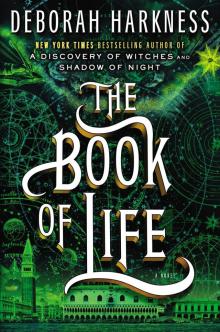 The Book of Life
The Book of Life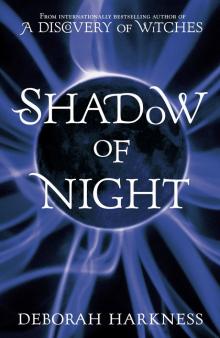 Shadow of Night
Shadow of Night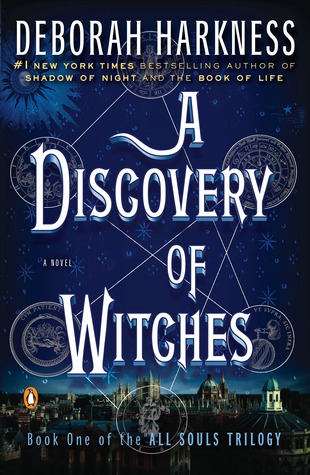 A Discovery of Witches
A Discovery of Witches The All Souls Real-Time Reading Companion
The All Souls Real-Time Reading Companion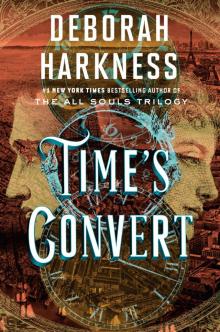 Time's Convert
Time's Convert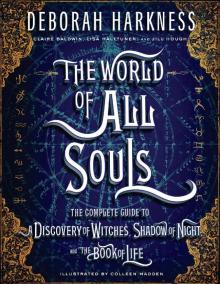 The World of All Souls
The World of All Souls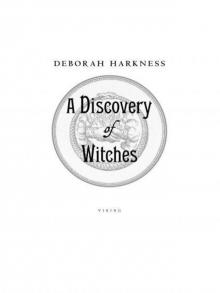 A Discovery of Witches: A Novel (All Souls Trilogy)
A Discovery of Witches: A Novel (All Souls Trilogy) Shadow of Night: A Novel
Shadow of Night: A Novel